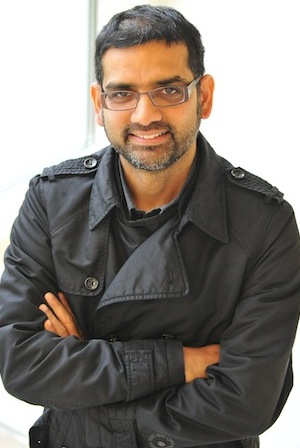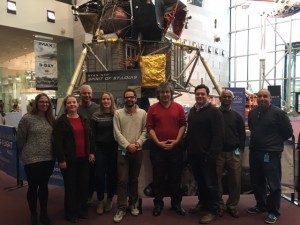
Pictured are 9 of the 27 Mission 9 to ISS Step 2 Review Board members that participated on the second day of the review, December 9, 2015. This is a group shot in front of the Lunar Module in the Milestones of Flight Gallery at the Smithsonian National Air and Space Museum, Washington, DC.
The National Center for Earth and Space Science Education (NCESSE), and Arthur C. Clarke Institute for Space Education, are proud to introduce the National Step 2 Review Board for SSEP Mission 9 to the International Space Station (ISS). On December 7 and 9, 2015, the Board met at the Smithsonian National Air and Space Museum, in Washington, DC, to review 63 finalist proposals for student flight experiments submitted from across the network of 21 communities participating in SSEP Mission 9 to ISS. Listed below are the 27 Board Members—scientists, engineers, and science educators from academia, federal agencies, commercial entities, and national science education non-profits.
For Mission 9 to ISS, a total of 11,890 grade 5-12 students were formally engaged in designing microgravity experiments suitable for flight aboard ISS. At the conclusion of the 9-week experiment design phase, a total of 2,466 proposals were submitted by student teams, and 909 proposals were forwarded for review by SSEP Step 1 Review Boards in the communities. Each of these local Boards selected 3 finalist proposals for submission to the SSEP National Step 2 Review Board, which therefore received 63 finalist proposals from the 21 Mission 9 communities.
For Step 2 review, the Board Members were divided into seven teams, each comprised of both researchers and science educators, and each team responsible for review of proposals from 3 SSEP communities. Board Members selected 21 flight experiments, one for each community. The Board Members spent a great deal of time providing thoughtful comments for all 63 proposals, which were forwarded to the proposing student teams by NCESSE. The review went well beyond what is typical of reviews for professional research proposals given the deep recognition that the review process, and the comments back, were critically important teachable moments for the student researchers that worked so hard on their proposals. Through SSEP, we want to immerse students in real science. The review process is very much a part of real science, and that process therefore needs to be transparent, and a learning experience.
NCESSE reviewed all comments from the Step 2 Review Board to assess if there were any outstanding questions that needed to be addressed by the selected student flight teams, and by mid-December 2015, NCESSE formally notified each community of their selected flight experiments.
You are invited to explore the selected flight experiments and honorable mention finalist experiments for Mission 9 to ISS.
A Note to All Mission 9 Student Research Teams
To the thousands of students that participated in SSEP Mission 9 to ISS, regardless of whether your proposal was selected for flight, and regardless of whether it formally went before a Review Board, it is important to recognize the endeavor in which you’ve been engaged – real science. This is how real research proceeds from opportunity, to defining a proposed research program, to submission of a proposal, to formal proposal review and selection. In the professional world, comments back from the Review Board allow a team to rethink and refine their proposed research, so they can submit a better proposal for the next opportunity. We have indeed had SSEP student teams that did not get selected for spaceflight the first time, but did get selected with a refined proposal as part of their community’s next flight opportunity.
Reflect on the overall experience, and recognize that you and your team owned this process – you came up with a microgravity experiment of interest to you, and designed it to fly in a research mini-lab that has a very real set of constraints on its operation. So get excited about what you’ve achieved, and get excited about science, technology, engineering, and mathematics (STEM). We challenge you to seek out new opportunities in STEM where you can be curious and take ownership … in the journey.
Finally, recognize that YOUR COMMUNITY now has an experiment destined for the International Space Station, that you are part of this historic adventure, and now you and your community can rally around your flight experiment and root for its success.
The SSEP National Step 2 Review Board for Mission 9 to ISS—
 1. Norma Andrews
1. Norma Andrews
Professor, Department of Cell Biology and Molecular Genetics
University of Maryland
Norma Andrews obtained her PhD degree at the University of São Paulo, Brazil in 1983, followed by postdoctoral training at New York University in the group of Dr. Victor Nussenzweig. In 1990 she joined Yale University as Assistant Professor, where she was promoted to tenure in 1996 and to Full Professor in 1999. At Yale she held appointments in the Department of Cell Biology and in the Section of Microbial Pathogenesis. In 2009 she moved to the University of Maryland, where she was Chair of the Department of Cell Biology and Molecular Genetics until 2014. Her laboratory studies the cell biology of host-pathogen interactions and the mechanism of plasma membrane repair. Her laboratory was the first to show that conventional lysosomes in non-specialized cells respond to elevations in cytosolic free calcium by fusing with the plasma membrane, and secreting their contents (Rodriguez et al. J. Cell Biol. 1997; Jaiswal, et al. J. Cell Biol. 159: 625-635, 2002). The Andrews laboratory also demonstrated that calcium-regulated lysosomal exocytosis promotes the resealing of wounded cells (Reddy et al. Cell 106: 157-169, 2001). This process was shown to involve extracellular release of the lysosomal enzyme acid sphingomyelinase, ceramide generation, and a fast form of endocytosis that removes plasma membrane lesions (Idone et al. J. Cell Biol. 180:905-914, 2008; Tam et al. J. Cell Biol. 189:1027-38, 2010; Corrotte et al. Traffic 13:483-494, 2012; Corrotte et al. eLife 2013:2:e00926, 2013).
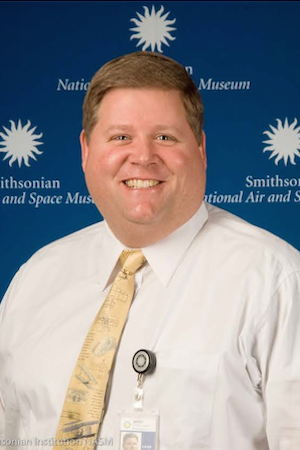 2. Doug Baldwin
2. Doug Baldwin
Chief, NASM Educational Initiatives
Smithsonian National Air and Space Museum
Currently Doug Baldwin is the Chief of Education Initiatives for the Smithsonian National Air and Space Museum (NASM). In this new position Doug is charged with working with new and existing educational partners to bring the resources of the National Air and Space Museum to any appropriate new and existing educational opportunity that presents itself. Doug is in his 13th year here at NASM, and his 19th year as and aerospace educator and astronomy and space science content provider. Doug began working for the Smithsonian National Air and Space Museum on September 10, 2001. He was hired to lead the new education unit of the Steven F. Udvar-Hazy Center (UHC). This 760,000 square foot facility constructed near Dulles International Airport houses the remaining 80% of the National Air and Space collection currently not on display. The new museum opened in December 2003 in time for the 100th Anniversary of Flight. Doug attended the Florida Institute of Technology in Melbourne Florida where he earned an Army ROTC scholarship, obtained his BS in Space Science, acquired his MS in Management and was commissioned a 2nd Lieutenant in the US Army Reserves. After two years of military service Doug found himself at Redstone Arsenal, in Huntsville Alabama, and landed a position at the US Space and Rocket Center as a Space Academy Lecturer. While working for the Space Academy and Space Camp programs, Doug found a passion for science education that he has taken with him ever since. Currently Doug is working on a Master’s Degree in Education specializing in Instructional Design and Technology from George Mason University. Expected Graduation is May 2016.
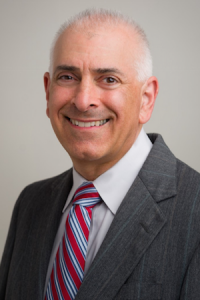 3. Dr. Matthew Bobrowsky
3. Dr. Matthew Bobrowsky
Adjunct Space Science Researcher, National Center for Earth and Space Science Education
Director of Special Programs, College of Mathematics, Natural Sciences & Technology, Delaware State University
Dr. Matthew Bobrowsky is a nationally recognized science educator and recipient of multiple awards for teaching excellence. He is the lead author of the Phenomenon-Based Learning books for teaching physical science. Matt teaches various scientific subjects, carries out scientific research, and engages in numerous public speaking events. Currently at Delaware State University, recent experience includes serving as Director of the Physics Demonstration Facility at UMCP, a collection of 1,600 science demonstrations. Matt has also developed science curriculum materials and presented countless workshops to teachers and the public. His educational presentations address topics such as the process of science, misconceptions in science, effective science teaching, and science vs. pseudoscience. His public presentations on astronomy are entertaining and educational. As an astrophysicist, Matt’s research includes astronomical observations with many telescopes, including the Hubble Space Telescope. His specialty is the study of planetary nebulae – clouds of gas expanding outward from aging stars. One planetary nebula that he discovered is the Stingray Nebula.
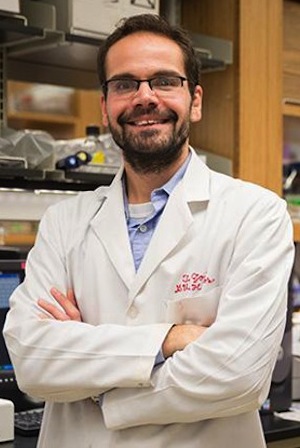 4. Dr. Shaun Brinsmade
4. Dr. Shaun Brinsmade
Assistant Professor, Department of Biology
Georgetown University
Shaun Brinsmade is a microbiologist and an assistant professor in the Department of Biology at Georgetown University in Washington, DC. His research lab is interdisciplinary in nature and uses cutting-edge and genome-wide methods to answer biological questions at the interface of metabolism and pathogenesis (the ability to cause disease) in Gram-positive bacteria. Currently, his lab is seeking to understand how a bacterium couples changes in intracellular abundance of key chemicals (metabolites) to changes in physiology and gene expression, including the expression of genes that direct the synthesis of factors that potentially damage the host. A major focus is the transcription factor CodY, which may act as a molecular switch that mediates the transformation from a harmless bacterium to one that causes disease. To learn more, visit www.brinsmadelab.com.
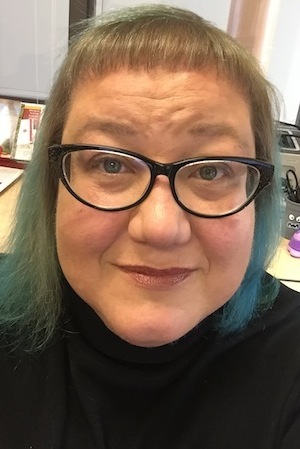 5. Michelle Brooks
5. Michelle Brooks
Associate Director, Biological Sciences Graduate Program
University of Maryland
Dr. Brooks has a passion for science education and training the next generation of scientists. As the Associate Director of the Biological Sciences Graduate Program, she is an advocate for her graduate students and works to ensure that the graduate education process is educationally enriching. She is also involved with undergraduate education in chemistry as an adjunct professor in the Science in the Evening and Masters of Chemical and Life Sciences programs. Dr. Brooks received her Ph.D. in chemistry from Michigan State University where she used electron magnetic resonance spectroscopy to study the electronic structure of biochemical cofactors involved in photosynthesis. Her interests in the application of magnetic resonance continued into her post doc at Columbia University where, as an NIH Fellow, she investigated chemically induced dynamic nuclear polarization by using solid state NMR spectroscopy.
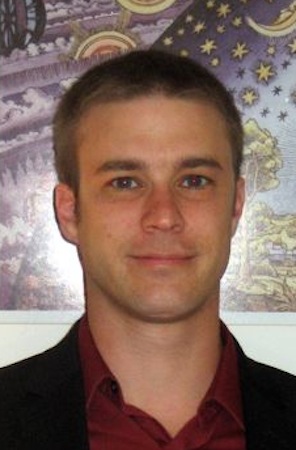 6. Dan Crooks
6. Dan Crooks
Postdoctoral Fellow, National Cancer Institute
National Institutes of Health
Dan Crooks studies kidney cancer metabolism at the NCI Urologic Oncology Branch in the NIH Clinical Center, with the goal of identifying novel metabolic pathways that can be targeted by therapeutics in the clinic. Dan completed a B.A. in Molecular Biology and an M.S. in Environmental Toxicology at the University of California at Santa Cruz, and earned a Ph.D. in Biochemistry from Georgetown University while performing research at the NIH on cellular iron metabolism in developing red blood cells and in mitochondrial myopathy patients. His long-term research interests lie in developing new metabolic techniques to study altered cellular metabolism and tissue specificity in human diseases.
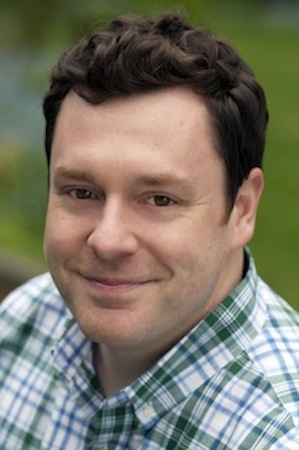 7. Dr. Daniel Dwyer
7. Dr. Daniel Dwyer
Assistant Professor, Department of Cell Biology and Molecular Genetics
Institute for Physical Science and Technology; Maryland Pathogen Research Institute, University of Maryland
Dr. Dwyer’s research interests are rooted in the study of dynamic events that occur during bacterial cell death and the influence of these events on antibiotic susceptibility. To address complex questions related to lethally stressed bacterial pathogens, the Dwyer Lab utilizes a broad complement of microbiology, bioengineering and chemical biology methods. Most notably, the lab applies synthetic and systems biology approaches to the identification and investigation of physiological vulnerabilities that appear under conditions of antibiotic stress in order to enhance our current antibiotic arsenal and resensitize drug resistant bacteria. Dr. Dwyer obtained his Ph.D. from the Molecular Biology, Cell Biology and Biochemistry Program at Boston University, following his B.S. in Biology from Boston College and two years in research and development at Forticell Bioscience, a tissue engineering company.
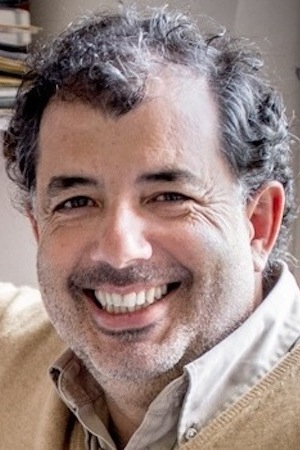 8. Jose Feijo
8. Jose Feijo
Professor, Department of Cell Biology and Molecular Genetics
University of Maryland
Dr. José Feijó is a Professor is the University of Maryland- College Park. He is a Plant Cell Biologist, with a focus on Reproduction and using the male gametophyte of plants- the pollen tube- as a model system to understand the fundamental properties of cellular growth and morphogenesis and cell to cell communication. For his research José uses a combination of live imaging, electrophysiology and genetics tools, and interfaces with biophysics by developing a number of mathematical and computational models. Along his career he was also involved in a number of major initiaves for science vulgarization. These include being the curator of what became one of the world largest exhitions organized to commemorate Darwin’s bicentenary (“Darwin’s Evolution”) on the Gulbenkian Foundation in Portugal, which included collaborations with the Natural History Museums of New York, London, Madrid, Paris, Berlin, etc.. The exhibition toured 6 venues in 3 countries and reached close to 0.5 million visitors. He was a also a founding member and editor for Biology of “Casa das Ciencias”, a web portal dedicated to science educators and students in portuguese language (casadasciencias.org), which sponsors the adaptation of high standard education materials to portuguese, and publishes peer-reviewed original educational materials. This portal has subsequently accumulated millions of hits. José has also organized more than a dozen international courses and workshops on live imaging and Plant Development, and is in involved on teaching plant biology and microscopy in the first BioMedical PhD program in portuguese speaking Africa, taking place at the University of Cape Verde.
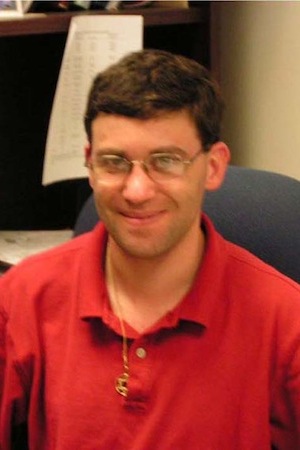 9. Dr. Kenneth Frauwith
9. Dr. Kenneth Frauwith
Lecturer, Department of Cell Biology and Molecular Genetics
University of Maryland
Dr. Frauwirth earned his bachelor’s degree in biochemistry from Brown University and his Ph.D. In immunology from the University of California at Berkeley. After post-doctoral research at the University of Chicago and the University of Pennsylvania, he joined the faculty of the Department of Cell Biology and Molecular Genetics at the University of Maryland, College Park. He performed immunology research at UMCP for 9 years, and currently teaches courses in general biology, cell biology, immunology, and vaccinology. His interest in spaceflight was born of a fascination with science and fueled by a love of science fiction. He grew up with the Space Shuttle and believes that the exploration of space is one of the most exciting aspects of the 20th and 21st centuries.
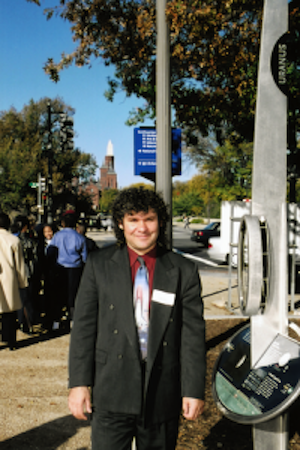 10. Dr. Jeff Goldstein
10. Dr. Jeff Goldstein
Program Director, Student Spaceflight Experiments Program (SSEP)
Center Director, Astrophysicist, National Center for Earth and Space Science Education (NCESSE)
Institute Director, Arthur C. Clarke Institute for Space Education
Dr. Jeff Goldstein is the creator of SSEP, and its Program Director. He is also the Center Director for the National Center for Earth and Space Science Education (NCESSE), and the Institute Director for the Arthur C. Clarke Institute for Space Education. Jeff is a nationally recognized science educator, and planetary scientist, who has dedicated his career to the public understanding of science and the joys of learning. He oversaw the creation of the Center’s national science education initiatives, including the Voyage National Program. He led the inter-organizational team that permanently installed the Voyage model Solar System on the National Mall in Washington, DC. He is a blogger at the Huffington Post, and writes Blog on the Universe. His planetary science research includes the development of techniques for measuring global winds on other planets using large telescopes on Earth. His research has produced the first direct measurement of the global winds above the clouds on Venus, and the first measurement of the global winds on Mars.
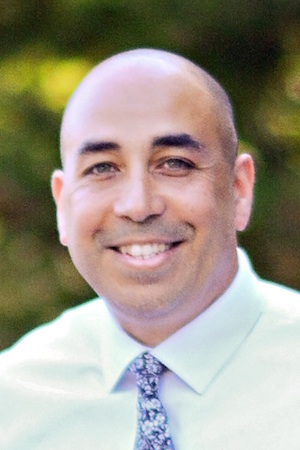 11. John Hamel
11. John Hamel
Assistant Flight Operations Manager, Student Spaceflight Experiments Program (SSEP)
Assistant Education Program Manager, National Center for Earth and Space Science Education (NCESSE)
John is the Assistant Education Program Manager at the National Center for Earth and Space Science Education. He provides logistics and coordination support for NCESSE’s various programs, including SSEP, Family Science Night and the MESSENGER Educator Fellowship program. As the SSEP Assistant Flight Operations Manager, John provides logistics support for SSEP, including website content development, coordination support for the annual SSEP National Conference, organization of SSEP delegations attending a mission launch, and overseeing the Mission Patch design competitions for each SSEP Mission. John also has extensive experience with non-profit education organizations and a certified association management group. He spent the early years of his career working directly with pre-school and school-aged children.
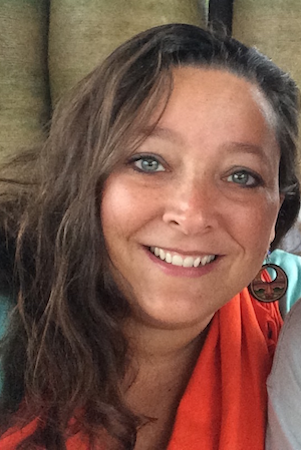 12. Stacy Hamel
12. Stacy Hamel
Flight Operations Manager, Student Spaceflight Experiments Program (SSEP)
Education Program Manager, National Center for Earth and Space Science Education (NCESSE)
Stacy Hamel is the Flight Operations Manager for the Student Spaceflight Experiments Program overseeing all day-to-day activities from the time flight proposals are submitted by the communities through experiment return to Earth. Her previous experience at NCESSE includes co-directing the Voyage National Program – a national public education and outreach program that is installing replicas of the Voyage Scale Model Solar System located on the National Mall in Washington, DC, in communities worldwide. Stacy also co-directed many of the Center’s other Educational Programs including Journey through the Universe – a national initiative that engages entire communities—students, teachers, families, and the public—using education programs in the Earth and space sciences and space exploration that inspire and educate. Over 200,000 grade preK-12 students have participated in Journey through the Universe.
13. Sridhar Hannenhalli
Professor, Department of Cellular Biology and Molecular Genetics
University of Maryland
Sridhar Hannenhalli is a Professor in the department of Cellular Biology and Molecular Genetics at the University of Maryland, College Park, and is also a member of the Center for Bioinformatics and Computational Biology, and the UM Institute for Advance Computer Studies. Hannenhalli lab is broadly interested in developing computational and statistical approaches to harness the huge amount of biological data (genomes, epigenomes, transcriptomes, proteomes, etc.), to ultimately answer specific biological questions pertaining to gene regulation and evolution, both from the basic science as well as translational perspective.
 14. Dr. Manzour H. Hazbon
14. Dr. Manzour H. Hazbon
Senior Scientist, Bacterial Collections Scientist for BEI Bioresources
American Type Culture Collection (ATCC)
Manzour Hazbón obtained his BSc in Microbiology from the Universidad de los Andes in Bogotá Colombia and then he went to the Vrije Universteit Brussel (Free University of Brussels) where he obtained his MSc and PhD diplomas in Molecular Biology. His doctoral thesis focused on the cloning, characterization and overexpression of a lipase gene from a soil isolate of Pseudomonas wisconsisnensis, to be used as an additive for detergent formulations. Then he worked for over 10 years with tuberculosis, focused mainly of understanding the mechanisms by which Mycobacterium tuberculosis acquires resistance to antibiotics. Between 2008 and 2012 Manzour worked at the Walter Reed Army Institute for Research and Meso-Scale Diagnostics where he acquired expertise in developing and validating molecular diagnostic assays to detect and identify blood-borne pathogens and respiratory diseases. Currently, he manages the bacterial collection for BEI Bioresources, where he characterizes and produces bacterial strains to support scientific research on infectious diseases.
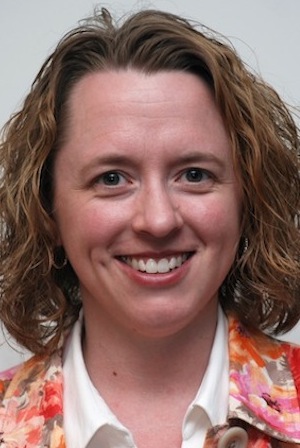 15. Dr. Brigette Hesman
15. Dr. Brigette Hesman
Assistant Research Scientist
University of Maryland
Brigette Hesman is a planetary scientist at the University of Maryland working at the NASA Goddard Space Flight Center in Greenbelt, Maryland. She focuses her research on the chemical composition of giant planet atmospheres in the Solar System. She earned her PhD from the University of Saskatchewan in 2005 and started as a post-doctoral researcher at Goddard that same year. She has worked as part of the Composite Infrared Spectrometer team, which is spectrometer on the Cassini spacecraft in orbit around Saturn, since arriving at GSFC. She works on sequencing observations for the spacecraft and defining the scientific priorities for science observations during Cassini’s Solstice Mission (2010-2017). She has been a Participating Scientist with the Cassini program and was recently awarded a position as Co-Investigator on Cassini’s Composite Infrared Spectrometer. Brigette’s recent research has focused on using infrared spectra to investigate the effects Saturn’s storm systems have on Saturn’s atmosphere.
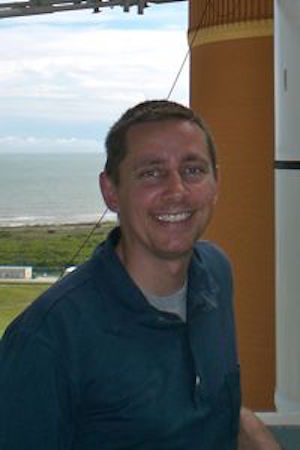 16. Mike Hulslander
16. Mike Hulslander
Adjunct Space Science Educator, National Center for Earth and Space Science Education (NCESSE)
Manager of Onsite Learning, Smithsonian National Air and Space Museum
Michael is responsible for science education at the Smithsonian’s National Air and Space Museum. He also manages the How Things Fly gallery, Moving Beyond Earth gallery, the Public Observatory Project and the Explainers Program. How Things Fly teaches visitors about the science of flight. Moving Beyond Earth is an immersive exhibition placing visitors “in orbit” during the shuttle and space-station era. At the Public Observatory visitors explore craters on the Moon, spots on the Sun, the phases of Venus, and other wonders of the universe using a 16-inch telescope. The Explainers Program gives high school and college students the chance to work at the National Air and Space Museum. Michael has worked in museums and zoos for more than 25 years, researching, writing, presenting and evaluating science programs for school groups, families and the general public.
17. Bob Klein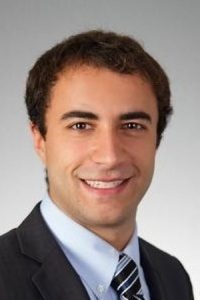
Systems Engineer, Future Technical Leaders Program
Northrup Grumman
Bob Klein is a Systems Engineer in Northrop Grumman’s Future Technical Leaders Program. He received a Bachelor’s Degree in Mechanical and Aerospace Engineering from Princeton University, where he started a monthly tradition of watching Apollo 13 and Top Gun that continues to this day. He continued his studies in the Aerospace Controls Laboratory at MIT, and received his Master’s Degree in Aeronautics and Astronautics from MIT in 2014. Bob is a National Science Foundation Graduate Research Fellow, a recipient of the Jack and Vickie Kerrebrock Fellowship in Aerospace Engineering, and President of the MIT Graduate Association of Aeronautics and Astronautics. While in Boston, Bob visited local elementary schools weekly through the “Science Counts!” after-school outreach program to expose students to fun projects in science and engineering. Bob believes strongly in science education and in promoting a passion for learning. His obsession with aircraft and spacecraft makes this significantly easier.
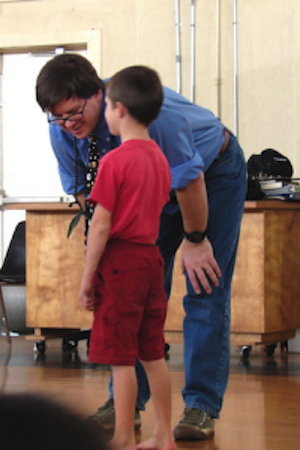 18. Dr. Tim Livengood
18. Dr. Tim Livengood
Adjunct Space Science Researcher, National Center for Earth and Space Science Education (NCESSE)
Research Scientist, University of Maryland Department of Astronomy
Dr. Tim Livengood is a senior advisor to SSEP and adjunct research scientist with the National Center for Earth and Space Science Education. He is a research scientist with the University of Maryland Department of Astronomy and works at NASA’s Goddard Space Flight Center. Tim has been a presenter and team leader for the Center’s public and school programs and has visited hundreds of classrooms. His current research uses a neutron-detecting instrument on the Lunar Reconnaissance Orbiter to measure deposits of water on the Moon, and uses infrared spectroscopy from telescopes on Earth to measure composition, temperature, and wind velocity in the atmospheres of other planets.
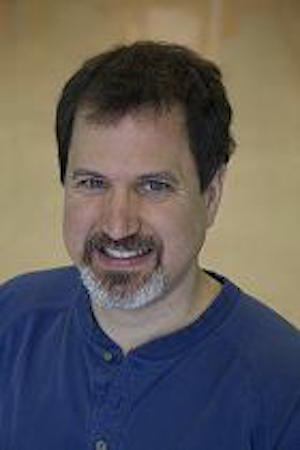 19. Dr. David Loeb
19. Dr. David Loeb
Associate Professor, Oncology and Pediatrics
Johns Hopkins University School of Medicine
Dr. David Loeb has been a pediatric oncologist since 2000. His clinical interests are diverse – he is a member of the bone marrow transplant team, and Director of the Musculoskeletal Tumor Program. In addition to clinical work, he also runs a research laboratory with several active areas of research. A core research program investigates the role of a transcription factor known as WT1 in the biology of sarcomas – tumors of connective tissue. The leading hypothesis is that WT1 regulates the expression of a broad array of pro-angiogenesis genes, and WT1 therefore promotes tumor growth through increasing the blood supply feeding cancer cells. The lab is currently designing a fluorescence-based high throughput screen for small molecule WT1 inhibitors that might be of use in treating WT1-expressing solid tumors. Another important area of research is the identification and targeting of Ewing sarcoma stem cells, with research currently focusing on a) the role of the RNA helicase DDX3 in Ewing sarcoma biology, and b) the role of the Wnt signaling pathway in regulating the growth of Ewing sarcoma and osteosarcoma.
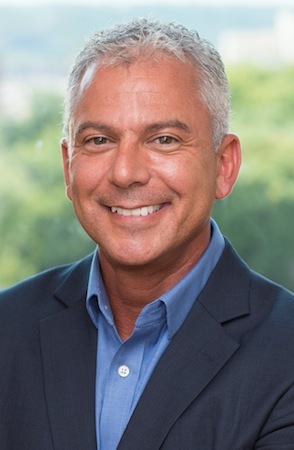 20. Dr. Todd Miller
20. Dr. Todd Miller
Associate Professor, Department of Exercise and Nutrition Sciences
Director, Weight Management & Human Performance Lab
Milken Institute School of Public Health, George Washington University
Todd A. Miller is an Associate Professor in the Department of Exercise and Nutrition Sciences at the George Washington University Milken Institute School of Public Health. Dr. Miller is an internationally renowned expert in Strength Training for athletic performance and health. His early focus on the influence of strength training on athletic performance evolved into an interest in how human beings respond to long-term space travel. To learn more, Dr. Miller has used animal models to investigate the deleterious effects of microgravity on physiology, and how those effects can be countered, and played an integral role in a multi-year NASA project that included flying an experiment on the ill-fated Columbia shuttle in 2003.
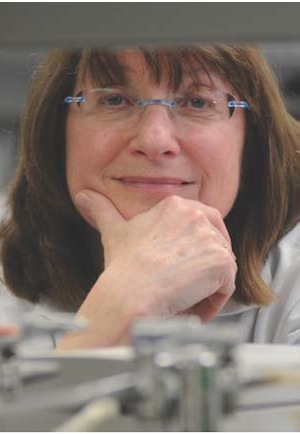 21. Dr. Sally A. Moody
21. Dr. Sally A. Moody
Professor of Anatomy and Regenerative Biology
George Washington University School of Medicine and Health Sciences
Dr. Moody has directed a biomedical research laboratory focused on the development of the nervous system for over 30 years. Her lab has studied numerous aspects of neural cell development in a number of animal models. Her favorite, however, is the frog Xenopus because of their large eggs and rapid development, the ease of performing gene gain- and loss-of-function in specific tissues, and the applicability of the information we gain to other vertebrates, including humans, due to a high degree of genome homology. Currently there are two major projects in the laboratory. First, we are discovering the role of a neural transcription factor, FoxD4, in the formation of neural stem cells. In both frog and mouse stem cells FoxD4 is required for the cells to become part of the nervous system and it plays an important role in controlling neural cell differentiation. We also are determining whether proteins found in the egg, including FoxD4, instruct embryonic cells to become neurons. Second, we are studying what genes are required for the proper formation of the sensory organs of the head. In frogs, fish, chicks and humans, the Six1 gene is pivotal in the development of these organs. We are identifying new genes that interact with Six1 in order to discover the genetic causes of birth defects that impact the nose, eyes and ears.
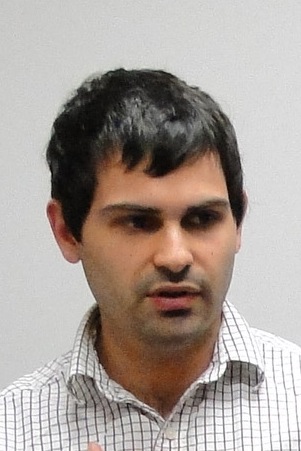 22. Dr. Daniel Serrano
22. Dr. Daniel Serrano
Research Associate, Institute for Research in Electronics and Applied Physics (IREAP)
University of Maryland
Daniel Serrano is a Research Associate at the University of Maryland Institute for Research in Electronics and Applied Physics (IREAP), where he works in program administration, grant proposal advising/mentoring, and science outreach initiatives. He completed a B.S. in Biochemistry at Virginia Tech and M.S. in Cell Biology and Molecular Genetics at the University of Maryland College Park. During his PhD work in the Biological Sciences program at the University of Maryland College Park, Daniel studied the optimization of targeted therapeutic delivery using nanocarriers and also the interactions between blood clots, blood cells, and the walls of blood vessels. In 2014, his last year of graduate school, Daniel participated in the American Association for the Advancement of Science Mass Media Fellowship, which has propelled his involvement in science management and outreach.
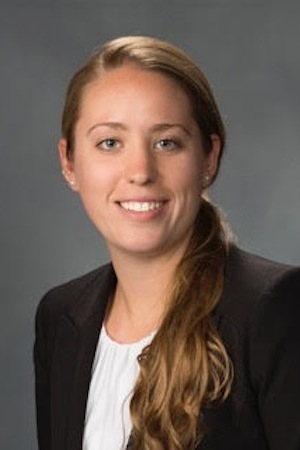 23. Margaret Shaw
23. Margaret Shaw
Systems Engineer
Lockheed Martin NEXT Team
Margaret Shaw is a Systems Engineer on Lockheed Martin’s NEXT Team in Bethesda, MD focusing on the identification and development of high-impact technologies to support Lockheed Martin’s long-term technology strategy. As an aerospace engineer and astrophysicist, her interests are broad across the fields of space exploration and sustainability (both on Earth and in space). Formerly a NSF Graduate Fellow at MIT, her M.S. research focused on modeling of habitation systems to better inform technology development and selection. While at MIT, she also worked on trade studies for a large aperture space telescope and cellularized, self-assembling space systems. While at Princeton University (B.A., Astrophysics), Margaret worked in a variety of research areas, including CubeSats, plasma propulsion, high contrast optical engineering, exoplanet detection and statistics, cosmology, and galactic spectroscopy. Margaret has supported a range of STEM outreach efforts including Project Lead the Way, the MIT Women’s Initiative, and AIAA’s student science fairs.
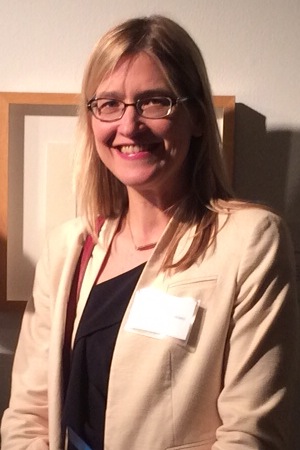 24. Dr. Michelle Starz-Gaiano
24. Dr. Michelle Starz-Gaiano
Associate Professor, Department of Biological Sciences
University of Maryland Baltimore County
Dr. Starz-Gaiano investigates the genetic control of animal development. In particular, her studies focus on understanding how cells adopt different identities and move through complex environments. She uses the vast genetic tools developed in fruit flies to identify new molecules involved in these processes. Interestingly, many of the same genes that regulate development in flies are required in the development of other animals, including humans. Currently, much of the work from her research group focuses on the regulation of the Janus Kinase and STAT molecular signaling pathway. Dr. Starz-Gaiano earned a bachelor’s degree from MIT, a PhD from NYU, and completed postdoctoral work at Johns Hopkins Medical School before starting at UMBC in 2008.
 25. Dr. Alexandra Surcel
25. Dr. Alexandra Surcel
Research Associate, Department of Cell Biology
Johns Hopkins University School of Medicine
Alexandra is interested in the intersection of chemical biology and mechanobiology, specifically using small molecules to elucidate the fundamental mechanical principles underlying the contractile machinery involved in a wide array of biological processes, including cell division, cell shape change, tissue morphogenesis, and mechanosensory pathways. Recently she established the first high-throughput screen using cell mechanics as a readout, identified and characterized 4-HAP, a compound that activates non-muscle mysoin II, and is currently pursuing its effect in pancreatic ductal adenocarcinoma mechanics, where 4-HAP may be used in combination therapy to reduce metastatic load. Alexandra’s other specific research interests include the role of osmoregulation in myosin II activation (with application to Alzheimer’s disease) and the evolution of cellular mechanosensory machinery (with direct application to astrobiology). Alexandra has been involved in the establishment of numerous science-outreach initiatives, including in the past six years SARE – a program which brings underrepresented and underprivileged high school students into labs for the summer and couples their research experience with efforts to bring them up to grade level in math and reading.
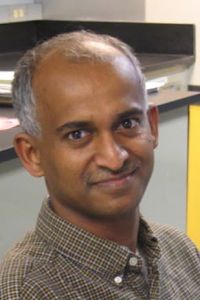 26. Dr. Hemayet Ullah
26. Dr. Hemayet Ullah
Associate Professor, Department of Biology
Howard University
Dr. Hemayet Ullah is an Associate Professor at the Department of Biology in Howard University. His research interests are in the field of plant biology, especially plant cell signaling, environmental stress physiology, and plant molecular and cellular biology, with current emphasis on unraveling the signaling pathways of extracellular signals inside the cell.
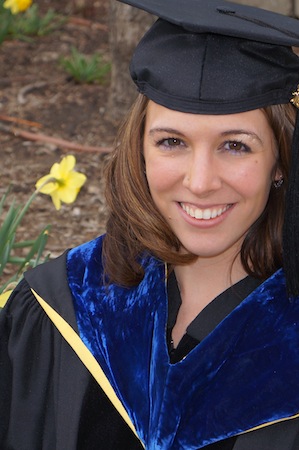 27. Mallory VanDongen-Sohmer
27. Mallory VanDongen-Sohmer
Future Technical Leader
Northrop Grumman
Mallory holds a Bachelor’s degree from Niagara University and a PhD in Chemistry from the University of Michigan. Her graduate work was focused on the challenges in translational applications of nanoparticle based drug delivery systems. Her fields of interest include multivalent mechanisms, surface interactions, and supramolcular assembly. She is the author of several peer reviewed publications, and her work was featured on the December 2013 cover of “Soft Matter”. She was an instructor for general chemistry and organic chemistry labs, and spent a semester lecturing a physical chemistry course. Mallory is currently a systems engineer in Northrop Grumman’s Future Technical Leaders program. In this new endeavor, she is working in the field of information security and cybersecurity education.

